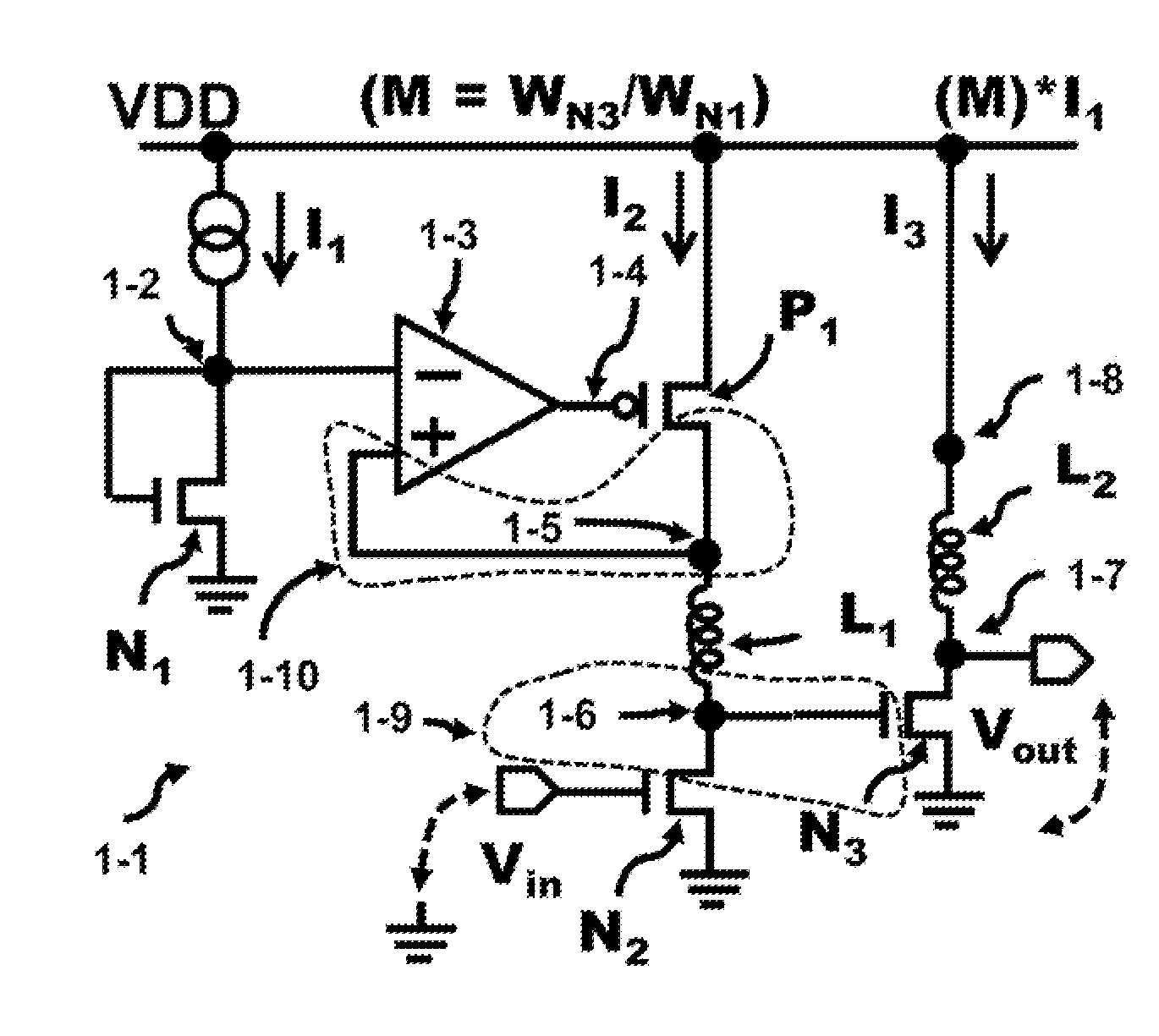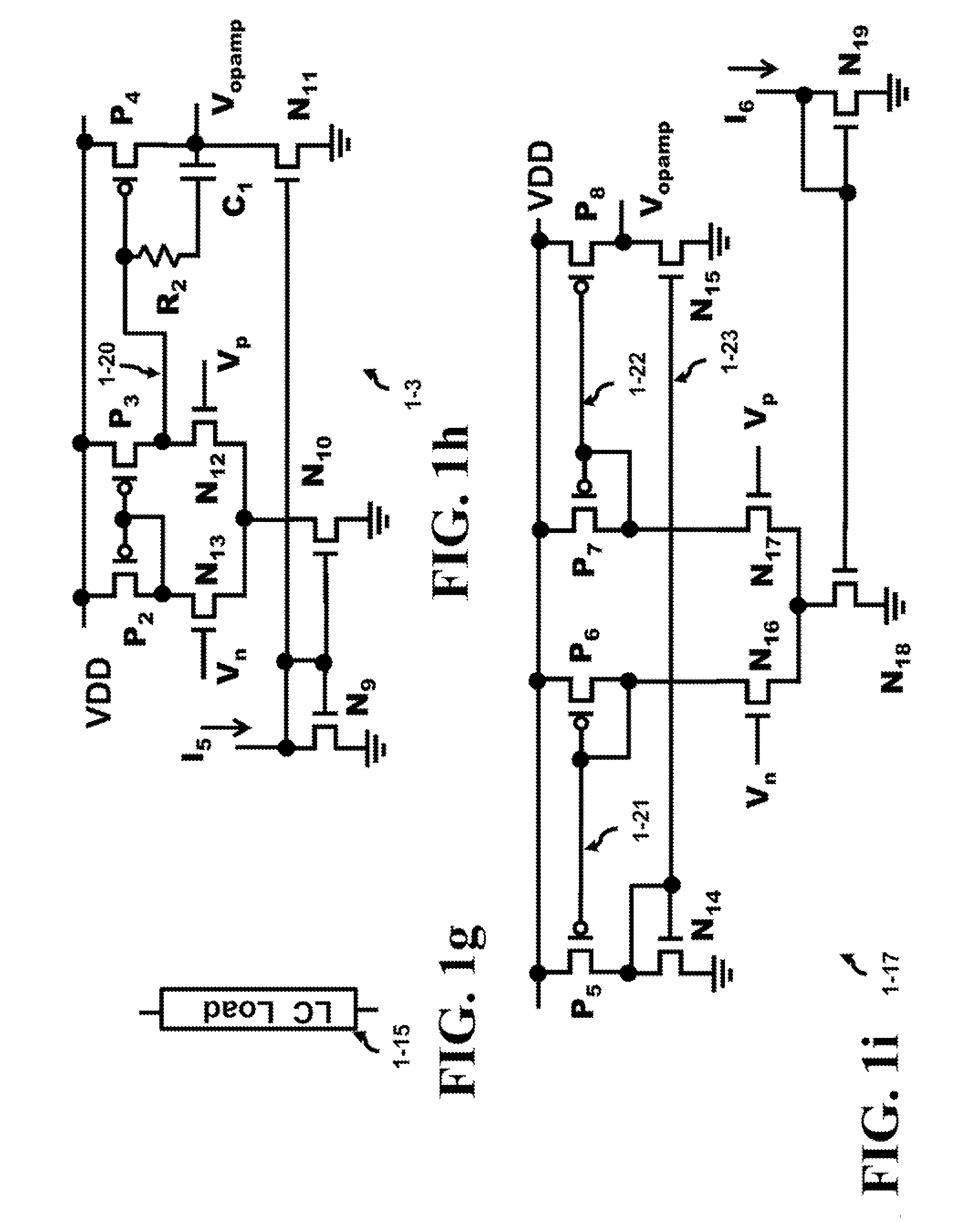Direct Coupled Biasing Circuit for High Frequency Applications
a biasing circuit and high frequency technology, applied in pulse generators, instruments, pulse techniques, etc., can solve the problems of introducing undesired and unavoidable parasitic capacitance to ground, power and die (substrates), reducing efficiency, and increasing the power dissipation of the “ac coupling” approach. , to achieve the effect of accurately controlling the power drive characteristics of the next stage, minimizing the distance between stages, and avoiding wasteful die area
- Summary
- Abstract
- Description
- Claims
- Application Information
AI Technical Summary
Benefits of technology
Problems solved by technology
Method used
Image
Examples
Embodiment Construction
[0024]This invention has been incorporated into a Power Stage (PA) design for a 60 GHz wireless system. The inventive apparatus is applicable to any high frequency system, for example, where the parasitic inductance of a metallic trace is of the order 1 pH per micrometer. At 60 GHz, the typical inductance within or between stages is on the order of about 50 to 120 pH. The actual dimensions of the capacitor depends on several issues; the type of capacitor, the overall positive reactance in a given stage that requires compensation; and, the physical layout of the capacitor, for example. At these frequencies, as a signal is coupled from the first stage to the next stage, the parasitic capacitance and / or the parasitic inductance of the coupling circuits is critical and needs to be minimized. This invention eliminates the need for “capacitor coupling” or “transformer coupling,” and along with them, the associated undesirable parasitic capacitance and inductance. In this invention, the si...
PUM
 Login to View More
Login to View More Abstract
Description
Claims
Application Information
 Login to View More
Login to View More - R&D
- Intellectual Property
- Life Sciences
- Materials
- Tech Scout
- Unparalleled Data Quality
- Higher Quality Content
- 60% Fewer Hallucinations
Browse by: Latest US Patents, China's latest patents, Technical Efficacy Thesaurus, Application Domain, Technology Topic, Popular Technical Reports.
© 2025 PatSnap. All rights reserved.Legal|Privacy policy|Modern Slavery Act Transparency Statement|Sitemap|About US| Contact US: help@patsnap.com



